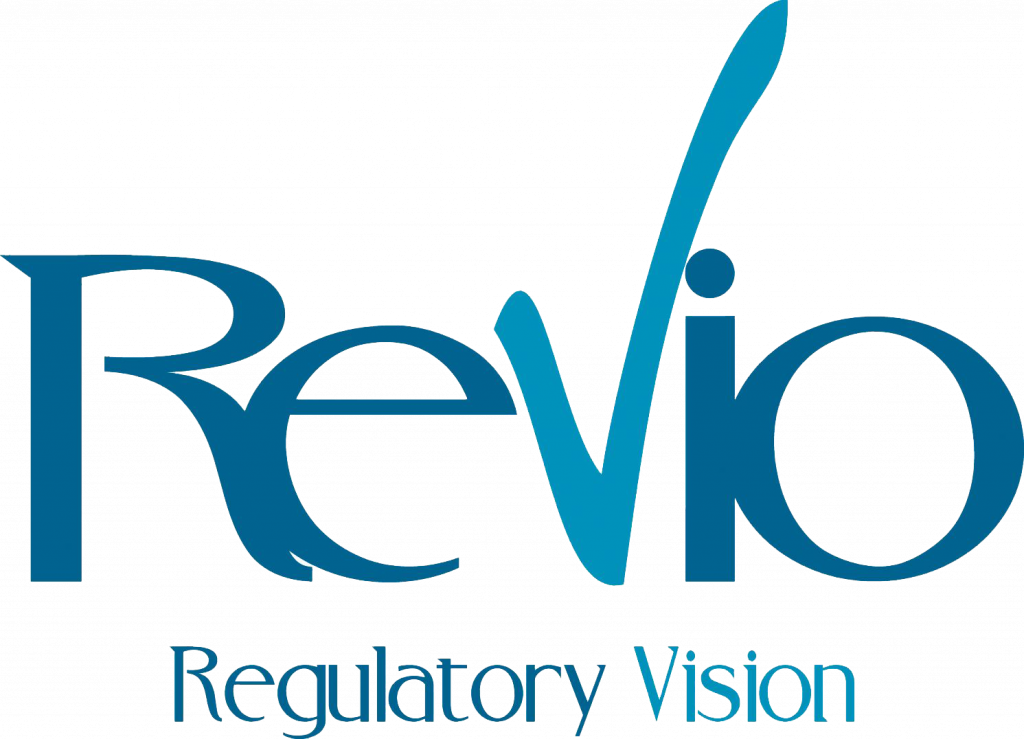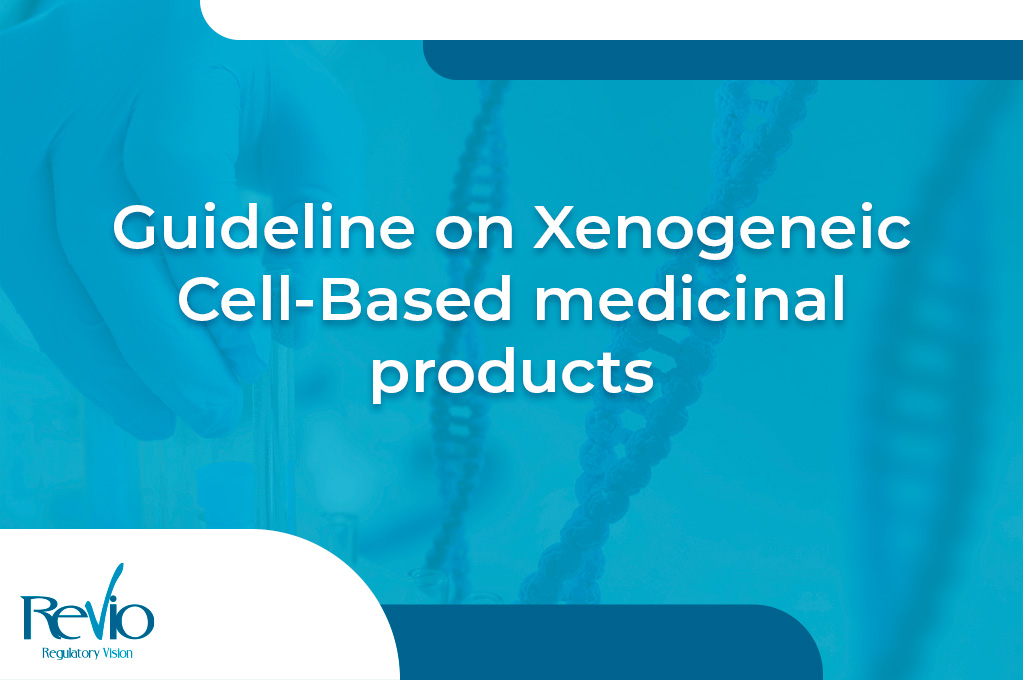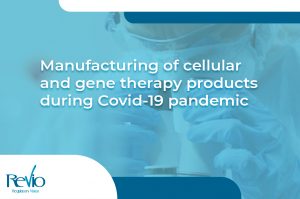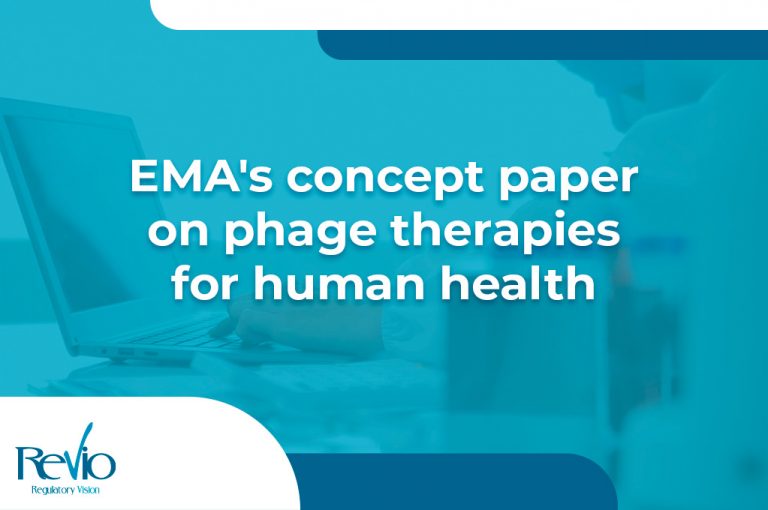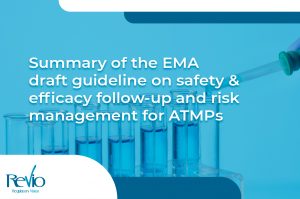Today, from Revio, we will provide an overview on the EMA’s Guideline on Xenogeneic Cell-Based Medicinal Products. This guideline offers general principles for the development of these types of products. It is intended for products entering the Marketing Authorization procedure, but applicants entering clinical trials should also consider these principles.
Xenogeneic cell-based therapy
Xenogeneic cell-based therapy involves the use of viable animal somatic cell preparations, appropriately adapted for: (a) implantation/ infusion into a human recipient or (b) extracorporeal treatment through bringing (non-human) animal cells into contact with human body fluids, tissues or organs. Xenogeneic materials might be sourced either from non-transgenic or transgenic animals and these animal cells can also be genetically modified.
The main aim is to restore the functions of cells, tissues, or organs meaning. This means that the genotype and/or phenotype of the cells may have been modified, for example, through isolation, culture, expansion, pharmacological treatment or combination with various matrices.
Risk analysis
The general risk criteria and principles for the risk assessment defined in the Cell-based Guideline (EMEA/CHMP/410869/2006) also apply for xenogeneic cell-based medicinal products. Specific concerns should be considered: The human use of xenogeneic cells/tissues is associated with several obstacles, including, but not limited to, management of the risks of transmitting known and unknown pathogens. The utilization of xenogeneic cells/ tissues in humans presents various challenges, which encompass, but are not restricted to, addressing the potential transmission of recognized and unfamiliar pathogens. Most importantly, there is a potential risk of introducing new infectious diseases into the general population through adaptation in an immuno-suppressed host.
Quality and manufacturing aspects
Three steps have been identified in the production of the xenogeneic cell-based product, which require specific consideration:
- Source of animals
- Procurement (extraction of organs/tissues or cells)
- Processing
Procurement and processing of the xenogeneic materials needs to be performed in facilities separated from the animal facilities. The manufacture of the active substance starts at the receipt of the animal starting materials in the GMP approved manufacturing facility.
The guideline provides specific recommendations on Starting and Raw Materials, Manufacturing Process, Characterisation and quality control, Adventitious agents safety, Process Validation, Formulation and Traceability.
Non-clinical testing
Whenever possible, it is advised to conduct non-clinical testing protocols using relevant animal models in which the xenogeneic cells, including their bioactive molecules are active and can be compared to the human situation. Depending on the study’s objective, cross-species animal studies may be required.
Pharmacology and Toxicology recommendations are provided in the document.
Clinical development
The clinical development of xenogeneic cell-based products should initially involve patients with serious or life-threatening disease for whom adequately safe and effective alternative therapies are not available, or where there is a potential for a clinically relevant benefit.
Regarding clinical development, EMA’s guideline explains some general aspects, pharmacodynamics, pharmacokinetics, dose finding studies, clinical efficacy and clinical safety studies.
Pharmacovigilance and risk management plan
The unique characteristics of xenogeneic cell-based medicinal product should be considered, as well as the varying levels of risks associated with each individual product and the proposed therapeutic use. The pharmacovigilance plan should include a specific surveillance plan, enabling the rapid identification of epidemiologically significant links and providing data for the long-term safety assessment of xenogeneic cell-based therapy.
In the context of xenogeneic cell-based medicinal products, numerous adventitious agents (viral, bacterial, parasitical infections and infestations) need to be considered. The Guideline on Safety and Efficacy Followup – Risk Management of Advanced Therapy Medicinal Products should be consulted (EMEA/149995/2008).
This is some information provided in EMA’s Guideline on Xenogeneic Cell-Based Medicinal Products, for more information you can check the official guideline here!
Also, we have a dedicated webpage to bring you the latest updates, guidance and developments. You can also follow us on LinkedIn.
We hope you find this useful and of interest. If you would like to discuss any of these updates with the team at REVIO, please get in touch here.
